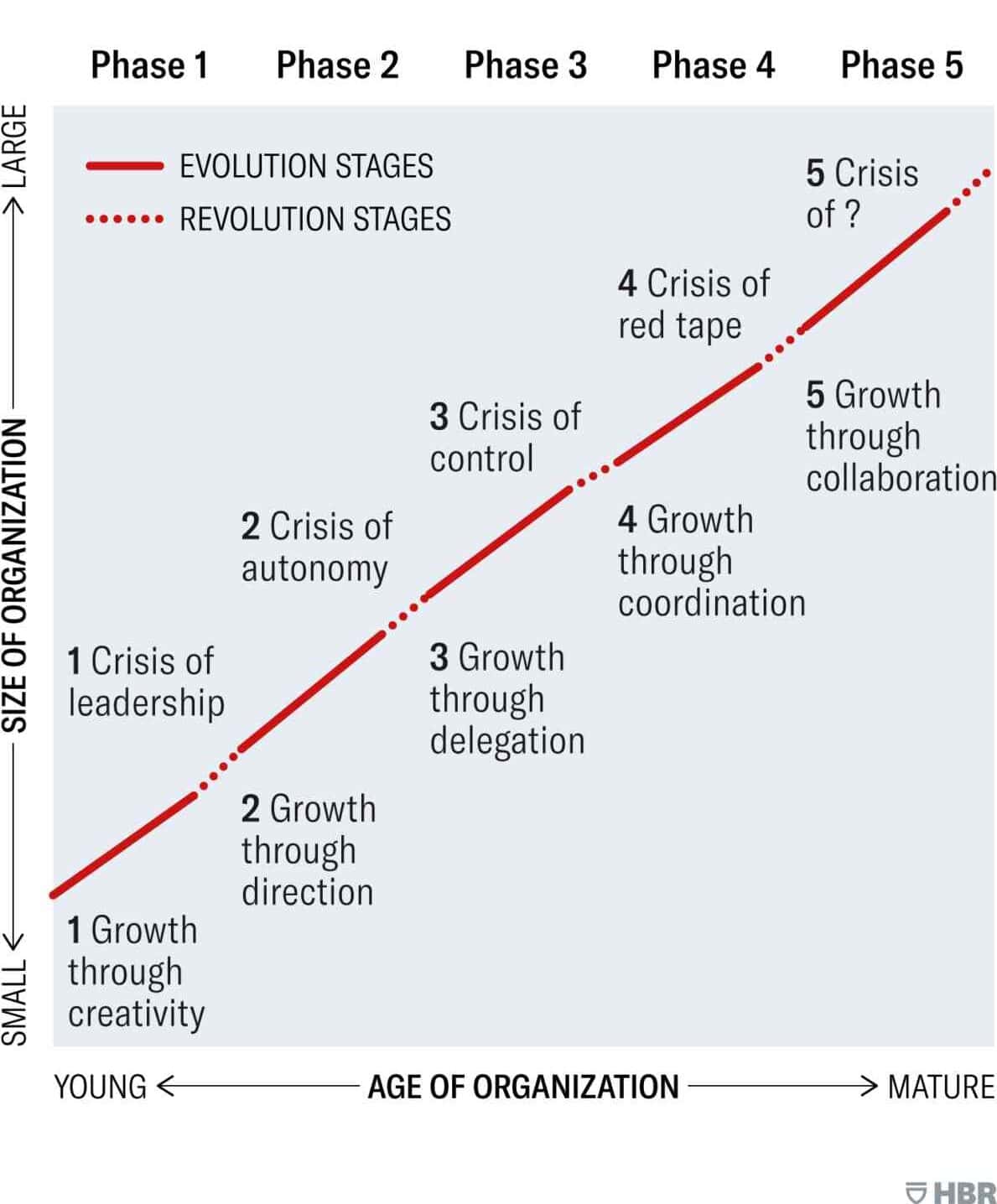Today, the business landscape is ever-evolving and fast-paced, making it easier than ever to start a small business. However, growing this venture into a successful one requires more than just hard work – it needs the right strategies and an entrepreneurial mindset.
Fortunately, you can make the process of turning your small business into a flourishing enterprise simple and straightforward with the proper tools and guidance.
In this blog post, we will look at eight essential steps to grow your small business. Whether you are an aspiring entrepreneur just beginning or an experienced business owner looking for fresh ideas, these steps can help you get a competitive advantage, draw in more customers, and attain long-term success.
So, let’s get started on your journey toward growth and success!
Table of Contents
The 5 Stages of Small Business Growth
Starting a small business can be exciting and fulfilling but also a journey full of challenges and obstacles. Understanding the various growth stages that any organization experiences is essential for creating a winning strategy.
The Harvard Business Review published an article in 1983 by Neil C. Churchill and Virginia L. Lewis that detailed the five stages of small business growth.
Today’s entrepreneurs can use these phases to assess where they are and where they should be going by using the stages.
Existence Stage
The first stage is the existence stage, during which the establishment and launch of the business are the primary concerns. The company is often in the planning stages at this point, and the entrepreneur is concentrating on creating a good or service that fills a niche in the market.
In the existence stage, the primary goal is survival, and the owner is often the only employee handling all the tasks, from sales to accounting.
Survival Stage
Once the business has been established, it enters the survival stage. The primary goal of this stage is to become profitable and generate enough revenue to cover the expenses. The owner should start delegating tasks to other employees or contractors to free up time and focus on growth opportunities.
The survival stage can be challenging, and many businesses fail during this period, so it’s important to be patient and persistent.

Success Stage
When a business has survived the initial stages, it enters the success stage. Now, the business is profitable and can afford to invest in growth opportunities. The owner should focus on expanding the customer base, increasing market share, and improving product or service quality.
The success stage is a critical period, and the owner should make strategic decisions to ensure the long-term sustainability of the business.
Takeoff Stage
The takeoff stage is when a business experiences rapid growth and expansion. This is when the business has a solid foundation and can scale its operations to meet the demand. The owner should focus on hiring the right people, implementing systems and processes, and investing in marketing and advertising to maintain the momentum.
The takeoff stage is challenging, and the owner should be prepared to adapt to changes in the market and make quick decisions.
The Resource Maturity Stage
The final stage is the maturity stage, where the business has achieved its full potential and reached a stable state. The company is now at a point where the owner can concentrate on preserving profitability and streamlining daily operations. To maintain growth, the owner can think about expanding into new markets or diversifying the company’s product or service offerings.
The owner should also regularly watch the market and make adjustments as necessary during the mature period, which calls for a strategic attitude.
Entrepreneurs must comprehend the five phases of small business growth to create a winning plan. Each stage calls for a distinct emphasis and strategy, and the owner must be ready to respond quickly to market changes. By identifying where their business is in the growth process, owners can set realistic goals, allocate resources effectively, and position themselves for long-term success.
Read also: 14 Small Business Marketing Truths No One Bluntly Tells You
The 8 Steps In Your Small Business Growth Journey
Now, let’s talk about the steps you’ll need to take to grow your small business.
1. Conduct in-depth market research
One of the most important steps in expanding your business is conducting market research. You may create a plan by thoroughly understanding your target market, their wants and preferences, and the competition. You may start by looking at client data, running surveys, and monitoring market trends.
Once you have the data, you can improve your product or service offering, your marketing messages, and your ability to spot new prospects. For instance, there is a market for a comparable good or service you could offer. As an alternative, you can find a market gap that you could fill with a special item.
2. Build a superb sales funnel
A sales funnel is a step-by-step process that guides potential customers toward a purchase. It includes several stages: awareness, interest, consideration, and purchase. By developing a sales funnel, you can ensure that you’re effectively nurturing leads and converting them into paying customers.
To create a sales funnel, you need to understand your target customer’s journey and create content and messaging tailored to each stage of the funnel. For example, you might use social media and blog posts to create awareness, email marketing to build interest, and targeted ads to encourage consideration and purchase.
Read also: 9 Free Marketing Strategies to Scale Your Small Business
3. Invest in a great team
It’s important to invest in your team. But it’s especially important if there are new members joining the company who aren’t aware of how things operate yet. Finally, investing in morale means ensuring that everyone feels supported by others within the organization; this will make them feel appreciated when they do well!
To help keep morale high during difficult times (or even just because), consider taking advantage of fitness opportunities like yoga classes or regular workouts. It’ll help keep everyone healthy while still allowing them plenty of time off work when necessary!
4. Embrace corporate social responsibility (CSR)
People are more likely to buy from a company that cares about the environment, community-based initiatives, and other causes important to them.
Employees will feel more satisfied with their jobs if their employers take care of people outside of work.
For example, by donating money toward disaster relief or supporting local charities through volunteering opportunities at school events like fundraisers or bake sales. This allows them to make connections outside their workplace network while maintaining visibility within it!
Read also: 14 Low-Cost Local Marketing Ideas That Will Make a Big Impact
5. Build a quality reputation
The first step to building a quality reputation is being honest and open. Be a good listener, communicator, and team player. As you become more respected in your industry or community, people will want to work with you.
This is because they know that if something goes wrong (and it will), your company will take responsibility for it—and fix it quickly!
6. Build a strong team and company culture
Your employees are the backbone of your company. Offer training and development opportunities for all levels of employees so that everyone feels valued and supported in their role.
Foster a positive work environment where team members can share ideas freely without fear of being criticized or dismissed by management. In fact, you should encourage this kind of behavior among managers too.
Read also: Top Retail Marketing Strategies To Grow Your Business
7. Monitor your finances and adjust your strategy accordingly
You can use financial data to make informed business decisions. For example, if you’re growing your business and need more money, the last thing you want to do is take on debt or sell equity shares in an expensive asset (like real estate).
Instead of making decisions based on emotion, focus first on monitoring your revenue and expenses. This way, you will know how much money comes in each month and where it goes.
Once you have these numbers at hand, develop a budget and financial plan for the next six months or so. This should include everything from staff salaries to marketing expenses. Make sure that you stick with it!
8. Evaluate and improve your strategy continuously
It’s crucial to assess and refine your strategy continually. You can find areas for improvement and modify your strategy by keeping track of your performance and results.
You must establish precise objectives and KPIs, monitor your progress, and do regular data analysis to assess and enhance your plan. You ought to ask for and act upon feedback from your partners, employees, and clients.
This will allow you to keep one step ahead of the competition and achieve long-term growth.
Read also: 7 Powerful Tips for Small Business Owners in 2024
Small Business Growth Challenges and How to Overcome Them
There are many challenges that small businesses face today. Let’s take a look at a few of them.
Direct and indirect competition
Competition from other business owners can be a challenge. As you grow your small business, it’s important to stay aware of what’s going on in your industry and make sure that you’re not missing any new opportunities. You might find yourself competing with businesses that are larger than you, or even better-capitalized than yourself.
Competition from other industries is also an issue—and one that may not seem like it at first glance. For example, if one company is selling plant-based protein products while another sells animal products, they will likely be competing for customers’ attention as well as their wallets (or purses).
In addition to these kinds of direct competitors outside the realm of food service operations (such as restaurants), there are also indirect competitors who may be offering similar services at lower costs but still providing excellent value for money compared with what other companies offer.
These include online retailers such as Amazon Prime Day deals or others who sell products via eCommerce platforms such as Shopify™ Marketplace!
Read also: The Small Business Guide to Growth Marketing Strategies
Taxes and other costs
Taxes and fees are the bane of small businesses. The burden of taxes and fees can be difficult to predict, calculate, understand, and explain.
These challenges lead to higher costs for your company in terms of time spent dealing with them and potential revenue loss through reduced sales or increased prices. This is due to higher prices charged by suppliers who must pass along their own tax costs to consumers.
Also be aware that there is a penalty for filing taxes late, so you either need to calculate this and factor it into your costs as a matter of course, or be conscientious when it comes to ensuring that any filing and payment deadlines don’t race past without being hit.
The good news is, there are ways to reduce these costs or at least manage them better.
You should invest in training for those who manage taxes at your company. Make sure they’re always up-to-date on how best practices have changed over time; this will help ensure that everything stays fair while also reducing stress levels throughout the organization at large.
Read also: The Tricks of Trade Marketing: 7 Strategies That Work
Customer service and other issues
Poor customer service can also be an issue for small businesses because customers might not be able to get through on the phone or Internet chat systems. The reason for this can be high call volume or slow response times from employees who may not be fully trained on how best to handle those situations effectively yet.
Government regulations and policies can be confusing, especially if you’re new to them or trying to understand them for the first time.
Along the road, you can run into unforeseen difficulties like market fluctuations or unplanned expenses. To maintain the viability of your company, you will need to be flexible and agile.
The answer? Keep up the clarity and the motivation
The hardest difficulty is maintaining motivation, though. Building a startup or growing a small business is a drawn-out and frequently difficult process. When obstacles start coming your way, it can be challenging to remain positive.
Having a clear vision and a strong enthusiasm for what you do is crucial because of this. You’ll be more prepared to handle the inevitable storms if you believe in your concept and remain committed to your objectives.
Expanding a new company is a difficult task. To survive the ups and downs, you’ll need to raise money, assemble a talented and committed team, develop your brand image, and keep up your motivation.
But the rewards can be enormous if you’re up for the challenge. It’s possible that, with perseverance and hard work, you may build something genuinely exceptional.
Read also: Get Noticed: 16 Creative Marketing Ideas for Small Businesses
Conclusion
It takes a combination of imagination, concentration, and hard work to grow a small business. You can lay up a plan for success and see tremendous growth by using these tried-and-true tactics.
Keep your flexibility, adjust to market developments, and refine your strategy constantly. With persistence and dedication, you can take your small business to the next level.


